
I’m writing this article on my computer with a pen input tablet, forsaking the usual speed and ease of the keyboard to see how the other 14 percent lives. I’m referring to the 39.5 million Americans over age 5 with some kind of disability, acording to the 2000 U.S. census. When I broke a bone in my right hand recently, I was suddenly thrust into that other world. I decided to explore the state of assistive technologies and see how well I would get along.
I learned to touch type several years ago, so I knew when I began this expedition that having to learn another input method would be odious. It’s hard to find a substitute for the speed and simplicity of keyboard input once you’ve become proficient. My first foray into assistive technology was another input method in which I’m practiced — the PalmPilot’s Grafitti language. I’ve written entire articles on the Palm while travelling about the country, so writing things in the device’s built-in notepad software and then transferring it to my computer desktop seemed like a fair idea.
I quickly realized that the tedium of writing everything in the Palm, including short e-mails and notes, was prohibitive, no matter how good my Graffiti skills. I next considered trying a one-handed keyboard, such as those offered by Matias Corporation. But a brief experiment using my left hand on a normal keyboard convinced me that learning to type in a new way would be too arduous.
My third choice was voice recognition, which has always been — and may always be — the technology of tomorrow. Based on positive user feedback, I chose a program called iListen, for US$99, that runs on Macintosh and is made by a company called MacSpeech.
iListen to This
The setup for iListen is fairly simple. I used a 17-inch PowerBook laptop with a built-in microphone, but you can get a separate USB mic with a $149 version of the program. The first time you run the program, you test the mic levels and then practice repeating several screens of sentences to give the computer an idea of the timbre of your voice. A voice pattern file is created on disk, and you can start to either dictate your prose into the computer or issue system commands, such as opening programs.
From a standing start, iListen worked well. After only about 20 minutes of setup, the program did a very good job of recognizing spoken sentences. Unlike voice recognition tools of the past, iListen actually seems to perform better the more naturally you speak. I tried the program on two different laptops and found that the higher processing power of the 17-inch PowerBook seemed to make a difference in the quality of voice recognition and the time it took to train the program.
Despite generally excellent recognition, there were a few missed words here and there (not counting homonyms). For that reason, the program truly requires some extra training.
Inkwell – Very Well
I decided to try a handwriting recognition program at the same time I was working with iListen. Wacom is the preferred vendor of Graphics tablets for the Mac. I tried out the company’s cheapest tablet, the $99 Graphire2, in conjunction with Apple’s Inkwell handwriting recognition software, which comes for free with Jaguar. After downloading the latest software driver from Wacom’s site, the tablet was recognized as soon as I plugged it into the USB slot, and Inkwell started up right away.
Apple’s handwriting recognition is amazing; if you haven’t seen it yet, you certainly should. Without any training at all, Inkwell delivered near-perfect fidelity. Similar to iListen’s spoken commands, there are gestures you can draw on screen that will control system actions.
Not Quite Perfect
Although both products I tested were very good, neither iListen nor the tablet could deliver perfect text. Both technologies required me to go back and manually correct certain words. In the end, I decided upon handwriting recognition as the easier solution, based simply on the fact that achieving decent results required no training whatsoever. Somehow, too, writing feels less odd than talking out loud to a computer.
What I learned is that with a relatively new Macintosh, the technologies available to persons with disabilities have dramatically improved from past years and can be quite useful. Nonetheless, I will be happy to return to the keyboard after several weeks of using assistive technologies. It is still a struggle to master the idiosyncrasies of these programs, and more effort must be put into making them even easier to use.

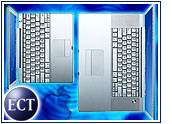





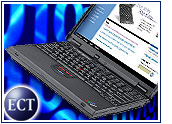
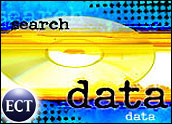

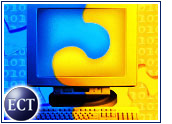

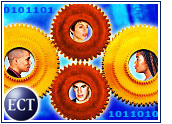

































Social Media
See all Social Media